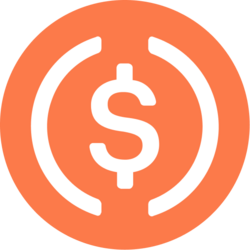If you’re a retired homeowner, there’s a good chance that your property is worth far more than you paid for it — and that equity could be a lifeline.
Back in 1995, the typical home cost $114,600. Today’s median sale price is nearly $400,000, according to the National Association of Realtors.
A home equity line of credit (HELOC) is one way to take some of that value and turn it into cash.
But is a HELOC the right solution during retirement? Let’s look at a few scenarios.
Scenario 1: You’re worried about the economy
Recent headlines have given retirees plenty of fuel for doomsday-level fears about their financial future. From concerns about the stability of the Social Security Administration to questions about the ripple effect of tariffs and global market volatility on 401(k)s, it’s understandable to look for ways to buffer your finances.
A HELOC can seem like an appealing backup plan to access cash without tapping retirement accounts during a downturn. Theoretically, it could buy you an additional 10 years to wait out the economic rollercoaster until you’re in a better position to pay your principal balance. But this strategy comes with substantial risk.
“Taking on debt in retirement requires careful consideration of expected income and expenses,” says Lori Trawinski, PhD, CFP and senior director at the AARP Public Policy Institute in Washington, D.C.
“Older borrowers may face increasing health costs, death of a spouse, or other situations that reduce available funds for debt payments.”
Using a HELOC as a hedge against a market slump also assumes that the economy won’t get worse. If it does, you could still be in a shaky financial position — only now your home is on the line.
“A HELOC might look like an easy way to avoid triggering certain tax thresholds or tapping into retirement accounts. But in practice, it can add complexity and stress,” says Jordan Leaman, CFP and branch operations manager at Churchill Mortgage in Wyoming, MI.
“Ideally, retirees should have a well-thought-out income plan in place, with a diversified portfolio that can weather market downturns without the need for additional debt. Planning ahead with liquid assets and a solid strategy for cash flow is key.”
Scenario 2: You want “fun money” in your golden years
After years of responsibly paying your mortgage, you may wonder if pulling cash out of your home equity could help you enjoy a higher quality of life. After all, who wouldn’t love to spoil their grandchildren or splurge on a memorable vacation?
However, even if a HELOC initially seems like an affordable way to access extra cash, it’s not worth risking your home. In an uncertain economic climate, this danger is even more pronounced.
“When interest rates rise and inflation increases, consumers may face difficulty making payments,” says AARP’s Trawinski. “Since most HELOCs have variable interest rates, they can be particularly risky in a rising interest rate environment since minimum payments will rise as a result.”
If you don’t read the fine print, a HELOC’s affordability can also be a bit deceiving.
During the HELOC’s 10-year draw period, borrowers are usually only required to pay interest. But once you enter the repayment period (which usually lasts 20 years), you’ll pay interest and principal.
“What seemed like an affordable loan can quickly become a lot more expensive, adding unnecessary strain,” says Leaman.
If you can’t pay, you could lose your home.
Scenario 3: You’re paying for home improvement
Ideally, this project will add to the value of your home, such as financing a new roof or replacing old siding. That way, you’re reinvesting the cash back into your home equity. There’s also a potential tax benefit: HELOC interest may be tax-deductible if it’s used to “buy, build, or substantially improve the residence,” according to IRS guidelines.
Even if your project doesn’t directly raise the home’s value — say, you’re adding ramps or a stair lift for mobility — it might still be worth getting a HELOC if the changes can make your home more livable and allow you to age in place.
You’ll still have to be prepared if your HELOC’s variable interest rate rises, so your payments shouldn’t be at the top of your budget. As long as you can afford the potential larger payments, a HELOC can be a solid financing solution.
Scenario 4: You need help covering living expenses
This is a tough one. If you need a bridge to cover a temporary financial setback — like a medical bill — and you know there’s an end in sight, a HELOC might work for you. But if paying your bills is a consistent struggle, adding to your debt could make things worse in the long run.
In this case, you might consider a reverse mortgage. A home equity conversion mortgage, or HECM, is a reverse mortgage backed by the Federal Housing Administration (FHA). It allows homeowners 62 and over to convert part of their home’s equity into cash without monthly loan payments. You receive funds based on the value of your home, which you can use toward your living expenses.
Keep in mind that the loan needs to be repaid when the home is sold or when the borrower dies, so unless your heirs can repay the HECM, they likely won’t be able to keep the house. But you are allowed to live there indefinitely, as long as you pay your property taxes.
The bottom line on HELOCs in retirement
HELOCs can be a great financial tool for the right reasons, in the right circumstances. Before signing on the dotted line, consider your finances and retirement goals and how a HELOC could help (or hinder) your ability to achieve them.















































